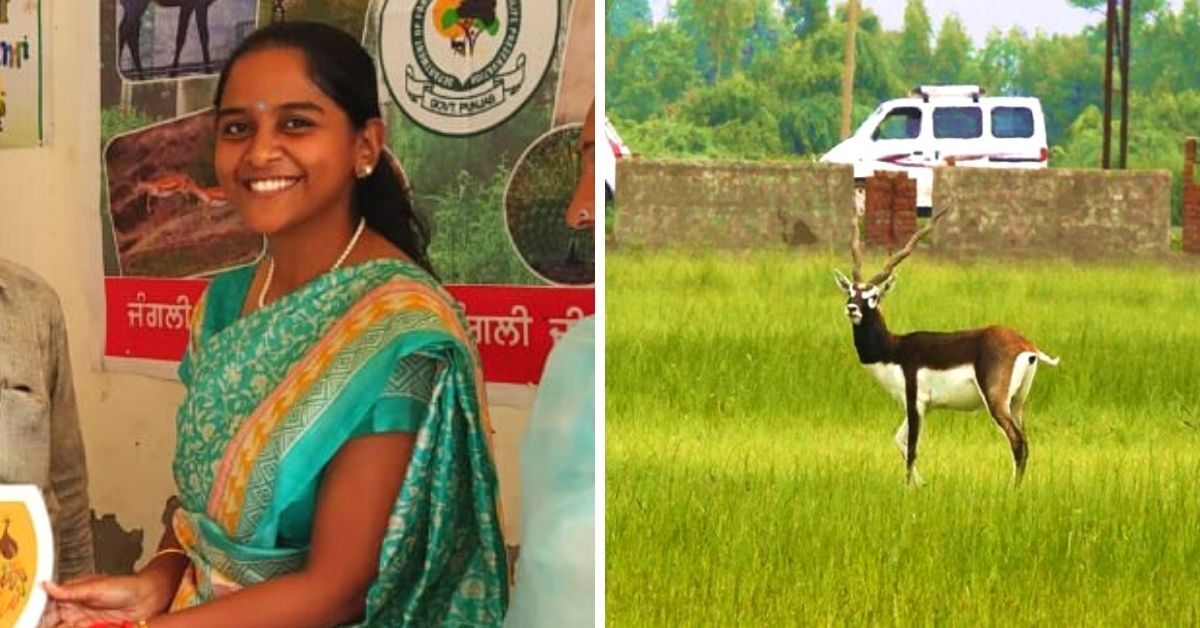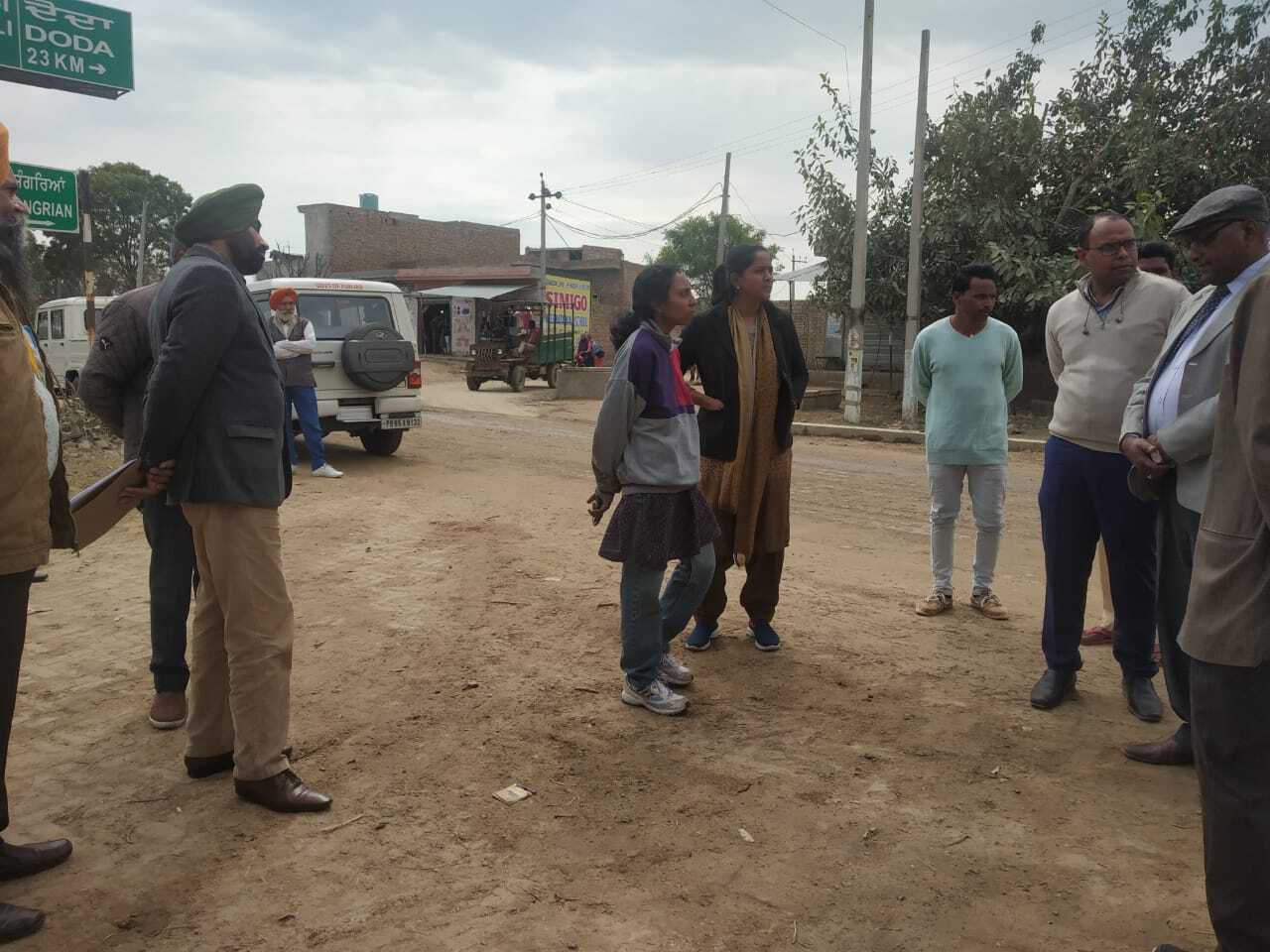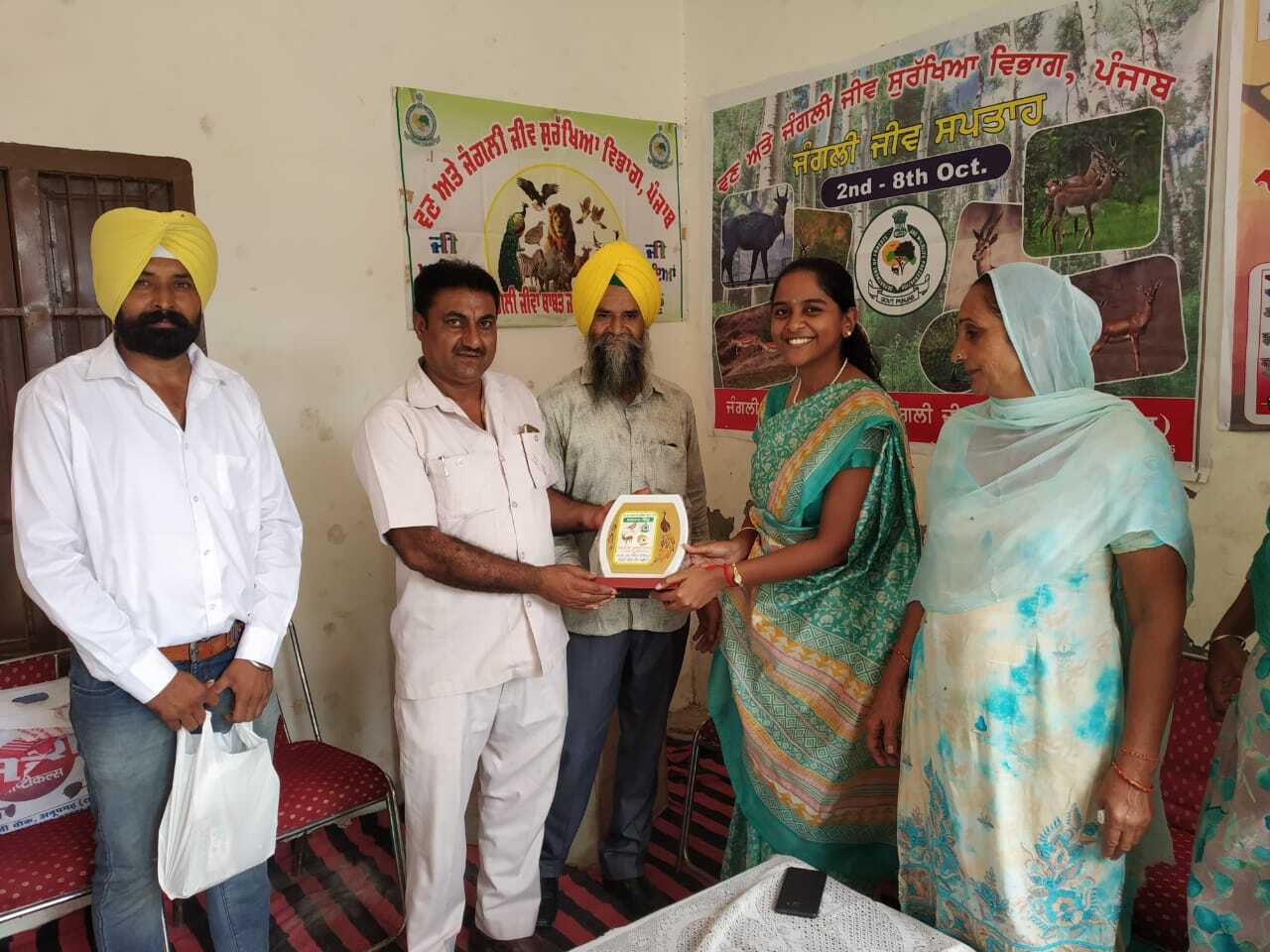Fighting to Save Blackbucks, Real Life ‘Shernis’ Convince 13 Villages to Ban Cobra Wires
Indian Forest Officers Kalpana K and M Geethanjali share their experiences, challenges to save blackbucks in Punjab's Abohar, an open wildlife sanctuary.

After serving in the forests of Andhra Pradesh for a couple of months, when Kalpana K was posted as the Divisional Forest Officer (DFO) in the Ferozepur division of Punjab’s Abohar open wildlife sanctuary, she was surprised to see that the sanctuary was owned by the villagers.
She was at the same time delighted to know the Bishnoi Community’s active involvement in saving the wildlife population, especially blackbucks, the indigenous antelope. The community had refrained from harming feral dogs and cows as well. However, due to the green revolution in the 1970s, locals occupied more land for agriculture and threatened the natural habitat of blackbucks.
This is where Kalpana played an important role in finding a solution to save blackbucks without asking people to compromise on farming activities. Apart from the 2014-batch officer, M Geethanjali, a 2001-batch officer, was posted as the Conservator Wildlife (Parks and Protected Areas).
In their 2-year term from 2018 to 2019, the two Indian Forest Service (IFS) officers took several initiatives to conserve the blackbucks. Their staggering efforts were even recognised by the IFS Association. The duo was featured in ‘The Green Queens of India – Nation’s Pride’, a book published by the Association.
Why community support is crucial

Covering a land area of about 18,650 hectares, the sanctuary is spread over 13 villages. It was in 1975 when the Akhil Bharatiya Jeev Raksha Samiti Bishnoi Sabha had asked the government to turn expansive farmlands into a sanctuary so that animals could freely roam without entering the villages.
“The Bishnois consider blackbuck as sacred animals so much so that mothers feed the orphaned baby blackbucks. With this kind of love for the wildlife, we realised it wouldn’t be possible to work without the community’s support and trust. The crucial part was making them realise the current habitat is not suitable for the wildlife,” says Kalpana.
Echoing her words, Geethanjali says, “Based on my experience of working in Abohar, I learnt that the people want the blackbucks, but they don’t realise the importance of maintaining wild habitats with natural vegetation which are important for blackbucks and all other wild animals. With an increase in agriculture and horticulture, the tibbas or dunes which are the natural habitats are levelled up for cultivation.”
Due to a reduction in tibbas, the blackbucks started entering the fields and damaging them. The menace of stray dogs also grew exponentially as they attacked the crops and blackbucks. To deal with this, the villagers installed cobra wires which led to fatal accidents.
Saving the blackbucks

Initially, when the forest department told the villagers to uninstall the cobra wires, they asked for compensation for crop damage. Even after they were given compensation for damages, the villagers didn’t pull down the wires.
“Dealing with the owners was complex given that we cannot enter or impose any rules without their permissions. A lot of things were not in our hands. So we decided to involve various stakeholders such as the panchayat committee, activists, veterinarians, forest guards and district administration to deal with issues,” says Kalpana.
“The department also took advantage of the educational institutions to spread awareness on the importance of wildlife. Various competitions were held in all schools of the villages to spread awareness and motivate children towards conservation. We did several presentations on the impact of cobra wire and habitat destruction on the overall wildlife ecosystem of Punjab,” she adds.
For the next eight months, the Wildlife Range staff went to every village and convinced farmers by conducting various awareness camps. Most villagers took the staff with them and removed the cobra wires in front of them. Such sustained efforts also led to a state-wide ban on cobra fencing.
“As per a 2019-study done by Wildlife Institute of India, only 5% of the sanctuary area has cobra wire. The issues of barbed wire and chain-link fences were resolved with the district administration’s help. It was reported that animals were migrating outside the sanctuary so the administration banned the sale of chain-link fences,” says Kalpana.

One of the significant achievements by Geethanjali and Kalpana was opening a rescue centre for immediate treatment of injured animals with water facilities and room for animal recovery in limited funds. For the first time, local veterinarians were appointed on 24×7 duty for the injured animals and the department staff was trained with first aid medicines. Once the animals recover, they are rehabilitated in the safe areas of the sanctuary.
Ambulances, cages, nets and other animal rescue equipment was given to the local staff to carry out the operations.
For the first time, an effort was made to monitor and collect wildlife sightings, behaviour patterns and movements of blackbucks. Although both the IFS officers have been transferred, the research will help in developing long-term solutions.
Geethanjali says new policy mechanisms can be developed for compensating the landowners for maintaining biodiversity in their lands to ensure farmers are happy and wildlife is undisturbed.
“There are different programs in different countries to compensate landowners for biodiversity conservation. They are called compensation mechanisms or Payments for Ecosystem Services (PES). My study and research is about that. Recently, I presented at an International conference on ecosystem services my views about restoring natural ecosystems in Abohar. More research is needed to tailor such schemes,” says Geethanjali who is currently pursuing higher studies in Finland.
Edited by Yoshita Rao
If you found our stories insightful, informative, or even just enjoyable, we invite you to consider making a voluntary payment to support the work we do at The Better India. Your contribution helps us continue producing quality content that educates, inspires, and drives positive change.
Choose one of the payment options below for your contribution-
By paying for the stories you value, you directly contribute to sustaining our efforts focused on making a difference in the world. Together, let’s ensure that impactful stories continue to be told and shared, enriching lives and communities alike.
Thank you for your support. Here are some frequently asked questions you might find helpful to know why you are contributing?


This story made me
-
97
-
121
-
89
-
167











